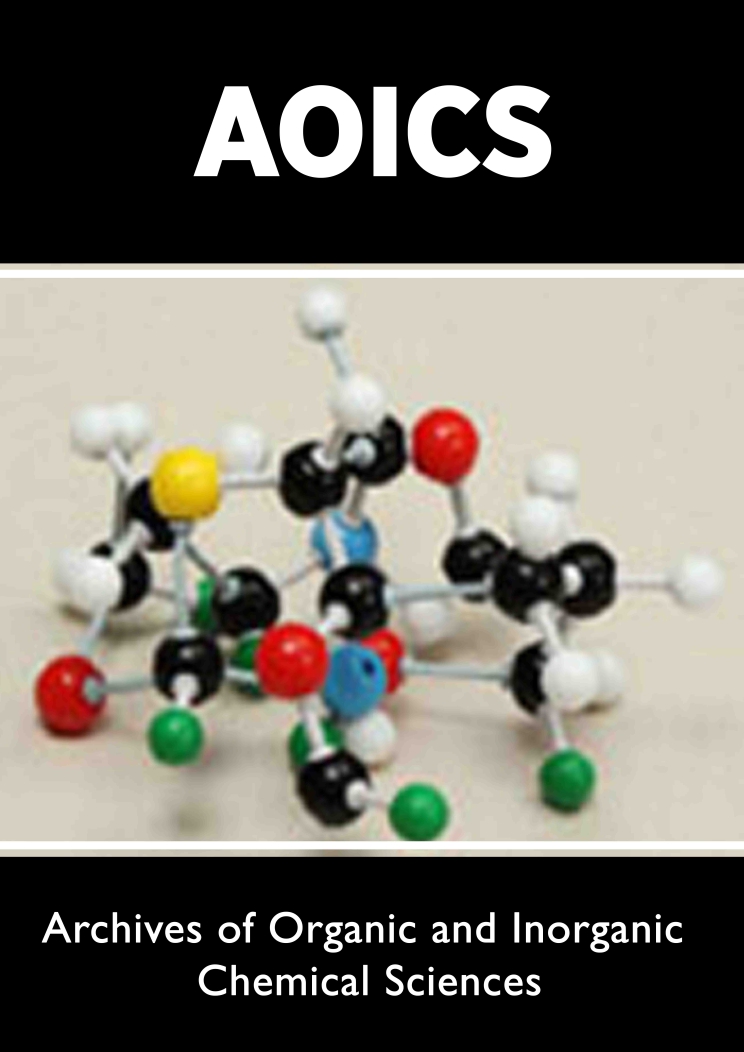
Lupine Publishers Group
Lupine Publishers
Menu
ISSN: 2637-4609
Research Article(ISSN: 2637-4609) 
Phytochemical, Antimicrobial Potential and Antifungal Activities Stem Bark Extract of Boswellia Ovalifoliolata Volume 1 - Issue 5
Teklit Gebregiorgis1* and Birhanu nigussie2
- 1Mekelle University, Department of Chemistry, Mekelle, Ethiopia
- 2Department of pharmacy, Addsia Abeba University, Ethiopia
Received: February 06, 2018; Published: February 19, 2018
Corresponding author: Teklit Gebregiorgis, Mekelle University, Department of Chemistry, Mekelle, Ethiopia
DOI: 10.32474/AOICS.2018.01.000122
Abstract
This study was carried out with an objective to investigate the antibacterial and antifungal potentials of Stem bark of Boswellia ovalifoliolata (BO). The aim of the study is to assess the antimicrobial activity and to determine the zone of inhibition of extracts on some bacterial and fungal strains. In the present study, the microbial activity of ethanolic extracts of stem bark of Boswellia ovalifoliolata. (Endemic medicinal plant) was evaluated for potential antimicrobial activity against medically important bacterial and fungal strains. The antimicrobial activity was determined in the extracts using agar disc diffusion method. The antibacterial and antifungal activities of extracts (5, 25, 50, 100, 250μg/ml) of Boswellia ovalifoliolata. Were tested against two Gram-positive Staphylococcus aureus, Streptococcus pyogenes two Gram-negative-Escherichia coli, Pseudomonas aeruginosa human pathogenic bacteria. Three fungal strains Aspergillus niger, Aspergillus clavatus, Candida albicans. Zone of inhibition of extracts were compared with that of different standards like ampicillin, ciprofloxacin, norfloxacin, and chloramphenicol for antibacterial activity and nystatin and griseofulvin for antifungal activity. The results showed that the remarkable inhibition of the bacterial growth was shown against the tested organisms. The phytochemical analyses of the plants were carried out. The microbial activity of the Boswellia ovalifoliolata was due to the presence of various secondary metabolites. Hence, these plants can be used to discover bioactive natural products that may serve as leads in the development of new pharmaceuticals research activities.
Keywords: Boswellia ovalifoliolata; in vitro Antibacterial activity; Antifungal activity; Secondary metabolites.
Introduction
Antibiotics are one of our most important weapons in fighting bacterial infections and have vastly improved the quality of human life since their introduction. However, over the past few decades, these health benefits are under threat as many commonly used antibiotics have become less and less effective against certain illnesses, not only because many of them produce toxic reactions, but also due to emergence of drug-resistant bacteria. It is essential to investigate new drugs. Drugs derived from natural sources play a significant role in the prevention and treatment of human diseases. In many developing countries, traditional medicine is one of the primary healthcare systems [1,2]. Herbs are widely used in the traditional medicine and their curative potentials are well documented [3]. About 61% of new drugs developed between 1981 and 2002 were based on natural products and they have been very successful especially in the areas of infectious disease and controlling cancer [4]. Recent trends, however, show that the discovery rate of active novel chemical entities is declining [5]. Natural products of higher plants may give a new source of antimicrobial agents with possibly novel mechanisms of action [6,7]. The effects of plant extracts on bacteria have been studied by a very large number of researchers in different parts of the world[8]. Much work has been done on ethnomedicinal plants in Ethiopia[9]. Plants are rich in a wide variety of secondary metabolites such as tannins, terpenoids, alkaloids, flavonoids, glycosides, etc., which have been found in vitro to have antimicrobial properties [10,11].
Herbal medicines have been known to man for centuries. Therapeutic efficacy of many indigenous plants for several disorders has been described by practitioners of traditional medicine [12]. Antimicrobial properties of medicinal plants are being increasingly reported from different parts of the world. The World Health Organization estimates that plant extracts or their active constituents are used as folk medicine in traditional therapies of 80% of the world's population [13]. The harmful microorganisms can be controlled with drugs and these results in the emergence of multiple drug-resistant bacteria and it has created alarming clinical situations in the treatment of infections. The pharmacological industries have produced a number of new antibiotics resistance to these drugs by microorganisms has increased. In general, bacteria have the genetic ability to transmit and acquire resistance to synthetic drugs which are utilized as therapeutic agents [14]. In an effort to expand the spectrum of antibacterial agents from natural resources. Boswellia ovalifoliolata belonging to Burseraceae family has been selected. In the Indian literature, [15,16] this plant has been described to be useful against inflammations, joint pains, ulcers, arthritis, amoebic dysentery and diabetes has been suggested [17] and it is widely used by tribal people to treat various ailments including ringworm and other fungal skin infections [18]. BosweIIia ovaIifoIioIata plant organs are known to be an important source of secondary metabolites, Ethiopian people are using the leaves to treat inflammation BosweIIia ovaIifoIioIata plant organs are notably phenolic compounds [19]. Boswellia ovalifoliolata exhibited significant antimicrobial activity and showed properties that support folkloric use in the treatment of some diseases as broad-spectrum antimicrobial agents [20]. Thus, Boswellia ovaIifoIioIata is well anchored in its traditional uses has now found wide-spread acceptance across the world. The purpose of this study was to investigate the phyto chemical composition, antimicrobial activities of fresh stem extracts of BosweIIia ovaIifoIioIata against some pathogenic microorganisms.
Material and Methods
Plant materials
Stem bark of the plant BosweIIia ovaIifoIioIata Eucalyptus were collected from humera Tigray Ethiopia. The plant was authenticated at the department of biology adigrat university Ethiopia. The stems were air-dried in a well ventilation place until the moisture content reduced to a minimum suitable for grinding.
Preparation of plant extract
Extraction: The extraction of the BosweIIia ovaIifoIioIata stem bark was carried out using known standard procedures [21]. The plant materials were dried in shade and powdered in a mechanical grinder. The powdered plant materials were initially defatted with petroleum ether(60-80 °C) followed by adding 900 ml of methanol and extracting by Soxhlet extractor for 72 hours at a temperature not exceeding the boiling point of the solvent. The extracts were filtered using Whatman filter paper (No.1) while hot, concentrated in vacuum under reduced pressure using rotary flask evaporator, and dried in a desiccator. The alcoholic extract yields a dark brownish solid residue weighing 5.750 g (23.0% w/w). More yields of extracts were collected by this method of extractions. The extracts were then kept in sterile bottles, under refrigerated conditions, until further use. The dry weight of the plant extracts was obtained by the solvent evaporation and used to determine concentration in mg/ml. The extract was preserved at 2- to 4°C. This crude ethanolic extracts was used for further investigation for potential of antimicrobial properties.
Preliminary phytochemical screening: The extracts were subjected to preliminary phytochemical testing to detect the presence of different chemical groups . Air-dried and powdered plant materials were screened for the presence of saponins, tannins, alkaloids, flavonoids, triterpenoids, steroids, glycosides, saponins, gum, mucilage, carbohydrates, reducing sugars, starch, protein, and amino acids, as described in literature [22].
Test microorganisms and growth media: The following microorganisms Staphylococcus aureus, Streptococcus pyogenes, Escherichia coli, Pseudomonas aeruginosa and fungal strains AspergiIIus niger , AspergiIIus cIavatus , Candida aIbicans were chosen based on their clinical and pharmacological importance. The bacterial strains obtained from aider referral hospital were used for evaluating antimicrobial activity. The bacterial and fungal stock cultures were incubated for 24 hours at 37 °C on nutrient agar and potato dextrose agar (PDA) medium respectively, following refrigeration storage at 4 °C. The bacterial strains were grown in Mueller-Hinton agar (MHA) plates at 37 °C (the bacteria were grown in the nutrient broth at 37 °C and maintained on nutrient agar slants at 4 °C), where as the yeasts and molds were grown in Sabouraud dextrose agar and PDA media, respectively, at 28 °C. The stock cultures were maintained at 4 °C.
Antimicrobial activity- determination of zone of inhibition method: In vitro antibacterial and antifungal activities were examined for methanolic extracts. Antibacterial and antifungal activities of plant part extracts against four pathogenic bacteria (two Gram-positive and negative) and three pathogenic fungi were investigated by the agar disk diffusion method. Antimicrobial activity testing was carried out by using agar cup method. Each purified extracts were dissolved in dimethyl sulfoxide, sterilized by filtration using sintered glass filter, and stored at 4°C. For the determination of zone of inhibition, pure Gram-positive, Gram- negative, and fungal strains were taken as a standard antibiotic for comparison of the results. All the extracts were screened for their antibacterial and antifungal activities against the Escherichia coli, Pseudomonas aeruginosa, Staphylococcus aureus, Streptococcus pyogenes and the fungi Candida aIbicans, AspergiIIus niger, and AspergiIIus cIavatus. The sets of five dilutions (5, 25, 50, 100, and 250 ng/ml) of Boswellia ovalifoliolata extract and standard drugs were prepared in double-distilled water using nutrient agar tubes. Mueller-Hinton sterile agar plates were seeded with indicator bacterial strains (108 cfu) and allowed to stay at 37°C for 3 hours. Control experiments were carried out under similar condition by using ampicillin, chloramphenicol, ciprofloxacin, and norfloxacin for antibacterial activity and nystatin and griseofulvin for antifungal activity as standard drugs. The zones of growth inhibition around the disks were measured after 18 to 24 hours of in incubation at 37 °C for bacteria and 48 to 96 hours for fungi at 28°C. The sensitivities of the microorganism species to the plant extracts were determined by measuring the sizes of inhibitory zones (including the diameter of disk) on the agar surface around the disks, and values < 8 mm were considered as not active against microorganisms.
Results and Discussion
Preliminary phytochemical screening
It was found that methanolic extracts of Boswellia ovalifoliolata stem bark contained tannins, flavonoids, saponins, triterpenoids, steroids, glycosides. The Phytochemical analysis (Table 1) revealed the presence of phenols, glycosides tannin and saponins were present in the methanolic extract of the leaves. Phytochemical screening of all the tested methanolic stem extract of Boswellia ovalifoliolata revealed the presence of tannins, saponins phenols, and glycosides. Regardless of the known antimicrobial activities of these phytochemical compounds, their presence in the extract is perhaps the reason for the antimicrobial effects exhibited by these plants on S.aureus and S.typhi. These substances are known to have antimicrobial effects. Tannins, for example are known to be made up of phenolic compounds and phenols, and phenolic compounds have been used extensively as disinfectants. Action of tannin may be due to protein denaturation and is found to be non-specific [19]. Tannins possess astringent and homeostatic properties and are therefore widely used as topical application on sprains, bruises, and superficial wounds and infections. Phytochemical screening of the extracts varies from one plant part to another as revealed in the results. It could also vary from place to place due to geographical location, climatic conditions and soil condition of a particular area. This may explain why it could be possible to have differences in chemical composition of the same plant of study in other areas.
Table 1: Results of phytochemical screening Boswellia ovalifoliolata
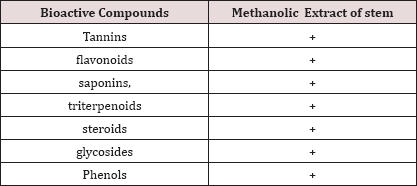
Microbial activity
The antimicrobial activity of the extracts of Boswellia ovalifoliolata were studied in different concentrations (5, 25, 50, 100, and 250 |ig/ml) against four pathogenic bacterial strains, two Gram-positive (Staphylococcus aureus , Streptococcus pyogenes ) and two Gram-negative (Escherichia coli, Pseudomonas aeruginosa ), and three fungal strains (Aspergillus niger, Aspergillus clavatus , Candida albicans ). These strains have been selected for the basis of its application purpose of further formulation study. Antibacterial and antifungal potential of extracts were assessed in terms of zone of inhibition of bacterial growth. The results of the antibacterial and antifungal activities are presented in (Tables2-4). The antibacterial and antifungal activities of the extracts increased linearly with increase in concentration of extracts (|ig/ml). As compared with standard drugs, the results revealed that in the extracts for bacterial activity, S. pyogenes and S. aureus were more sensitive as compared with E. coli and P. aeruginosa, and for fungal activity, C. albicans shows good result as compare with A. niger and A. clavatus. The growth inhibition zone measured ranged from 11 to 20 mm for all the sensitive bacteria, and ranged from 14 to 20 mm for fungal strains (Figures 1-7). The results show that the extracts of Boswellia ovalifoliolata were found to be more effective against all the microbes tested.
Table 2: Antibacterial activities of ethanolic extracts of stem bark of Boswellia ovalifoliolata against bacterial test organism
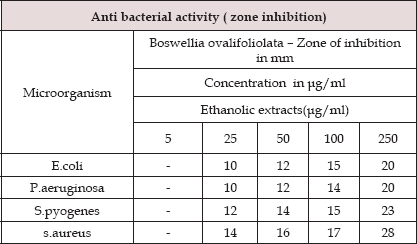
Values are mean ± SD of three parallel measurements- = no zone of inhibition.
Table 3: Antibacterial activity of standard drugs against bacterial test organism
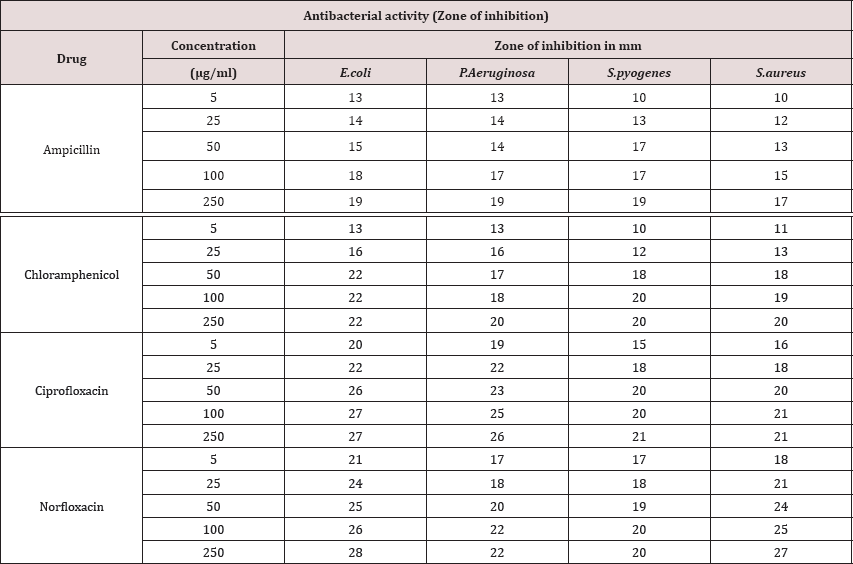
Table 4: Antibacterial activities of ethanolic extracts of stem bark of Boswellia ovalifoliolata against fungal test organism.

Values are mean ąSD of three parallel measurement ; - = No zone of inhibition.
Figure 1: Antibacterial activity against E.coli.
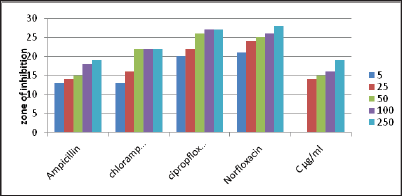
Figure 2: Antibacterial activity against P.Aeruginosa.
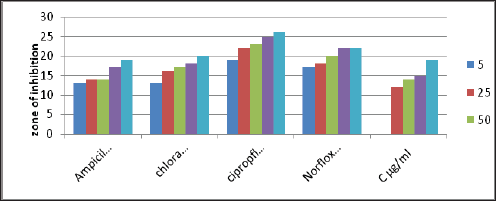
Figure 3: Antibacterial activity S.pyogenes.
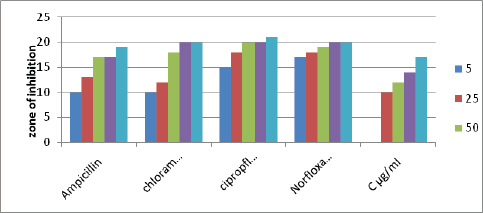
Figure 4: Antibacterial activity against S.aureus.
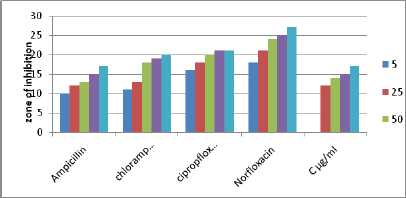
Figure 5: Antifungal activity against A. niger.
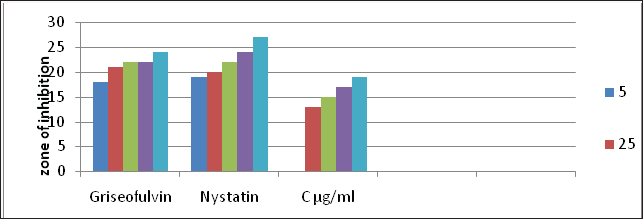
Figure 6: Antifungal activity against A. clavatus.
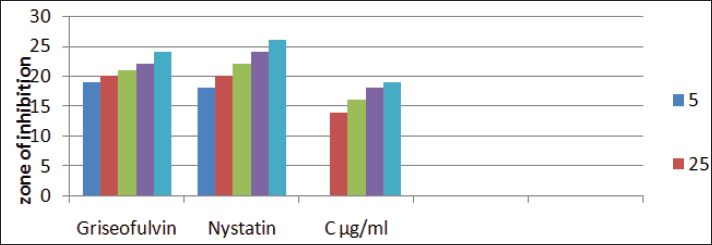
Figure 7:Antifungal activity against C. albicans.
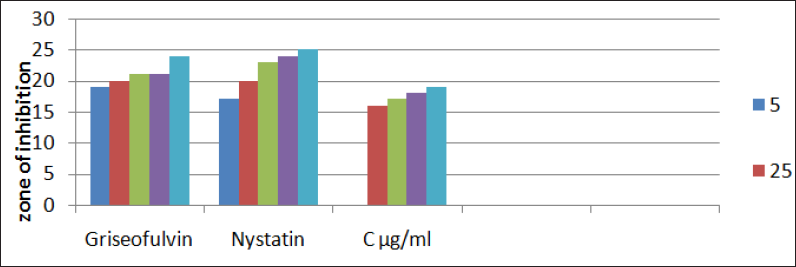
Table 5: Antifungal activity of standard drugs against fungal test organism.
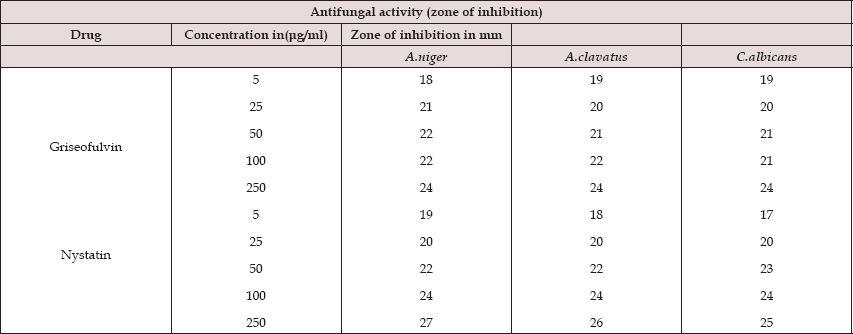
CML=Ethanolic extract of Boswellia ovalifoliolata stem bark (5-250μg/ml), μg/ml = microgram/ml 5,25,50,100,250 = various concentration.
Antimicrobial properties of medicinal plants are being increasingly reported from different parts of the world. The World Health Organization estimates that plant extract or their active constituents are used as folk medicine in traditional therapies of 80% of the world's population. In the present work, the extracts obtained from Boswellia ovalifoliolata show strong activity against most of the tested bacterial and fungal strains. The results were compared with standard antibiotic drugs. In this screening work, extracts of Boswellia ovalifoliolata were found to be active against any organism. Such as Gram-positive, Gram-negative, and fungal strains. The above results show that the activity of methanolic extracts of Boswellia ovalifoliolata shows significant antibacterial and antifungal activities. This study also shows the presence of different phytochemicals with biological activity. The result of phytochemicals in the present investigation showed that the plant contains more or less same components like saponin, triterpenoids, steroids, glycosides, flavonoids. It is also shown that the plant is rich in tannin and phenolic compounds and posses antimicrobial activities against a number of microorganisms. It gives a voluble importance in therapeutic index.
Conclusion
In the current investigation, the ethanolic extract has been selected for the study of such a selected plant,methanolic extract gave higher yield of chemical constituents expected for this research work. The importance of this work is that very good results are obtained and it will be helpful to carry out other data with MIC and other formulation study. methanolic extract is more suitable for clinical study. The methanolic extracts of Boswellia ovalifoliolata were found to be active on most of the clinically isolated microorganism and fungi, as compared with standard drugs. The present study justified the claimed uses of stem bark in the traditional system of medicine to treat various infectious disease caused by the microbes. However, further studies are needed to evaluate the potential effectiveness of the crude extracts as the antimicrobial agents. The present results will form the basis for selection of plant species for further investigation in the potential discovery of new natural bioactive compounds. Further studies which aimed at the isolation and structure elucidation of antibacterial active constituents from the plant have been initiated.
References
- K Venkata Ratnam, RR Venkata Raju (2008) In vitro antimicrobial screening of the fruit extracts of two syzygium species (myrtaceae). advances in Biological Research 2 (1-2): p. 17-20.
- Zeba Baqtiyar, AnushaJ, Kamala, Sam Jeeva Kumar E (2012) Anti ulcer activity of syzygium alternifolium agaist ethanol and NSAID induced ulcer in rats Internal Journal of Research in Pharmacology and pharm- cotheraputics 1: 18-23.
- C Sudhakar Reddy, KN Reddy, En Murthy, VS Raju (2009) Traditinal medicinal plants in seshachalam hills Andhra Pradesh , India Journal Medicinal plants Research 3(5): 408-412.
- S Karppusamy, G Muthuraja, KM Rajasekaran (2009) Lesser Known Eth- nomedicinal plants of algar hills, Madurai Dt. Of Tamil Nadu, Ethnobo- tanical leaflets, India 13: 1426-1433.
- K Madhva chetty, KN Rao (1990) Endemic plants of Tirumala hills in chittoor Dt of Andhra Pradesh, Vegetos, India 3(1): 12-15.
- K Narayana rao, N Nagaraju, S Vedavathy (1991) Use of medicinal plants in chittoor district of Andhra Pradesh Recent advances in medicinal aromatic and spice crops p.135-141.
- N Nagaraju, KN Rao (1989) Folk medicine for Diabetes from Rayalasee- ma of Andhra Pradesh Ancient science of life, India 9(1): 31-35.
- CH Sudhakar Reddy, KN Reddy, Chiranjibi Pattanaik, Vatsavaya S Raju (2006) Ehnobotanical observation on some endemic plants of estern ghats, Ethanobotanical leaflets, India p. 82-91.
- G Sudarsanam, MB Reddy, N Nsgaraju (1995) Vetanary Crude Drugs in Rayalaseema, Andhra pradesh International Journal of pharmacognosy, India 33: 52-60.
- N Nagaraju, KN Rao (1990) Asorvey of plants crude drugs of Rayalasee- ma Andhra Pradesh Journal of ehnopharmacology, India 29: 137-158.
- B Anand Mohan, B Bharatha Lakshmi Brief note on Syzygium alterni- folum (wight)walf., an endemic plant species found in sri venkataswara wild life sanctuary of Andhra Pradesh with special reference.
- N Nagaraju, KN Rao (1990) Ethonomedicine for jaundice (viral hepatitis ) from tirupati hills and its envirans of chittoor district Andhra Pradesh, India Indian j applied &pure Biol 5(1): 41-46.
- (2003) Natural product Radiance terminallia pallid fruit possess anti diabetic activity 2(3).
- Shaik abdul Latheef, Beerkam Prasad, Middi Bavji, Gangapatnam Subra- manyam (2008)Adatabase on endemic plants at tirumala hills in India- Bioinformation 2(6): 206-262.
- AJ Soloman Raju, P Varalakshmi, K Venkata Ramana (2012) Reproductive ecology of Terminalia pallid Brandis (combretaceae), an endemic and medicinal tree species of India current science 102(5): 909-917.
- MA Bhuijan, Mia MY, MA Rashid (1996) Anti bacterial principles of the seed of Eugenia jambolana. Banga J b Bot 25(2): 239-241.
- SC Jain, B Singh (1998) Bio-efficacy of Heliotropium Eilipticum needed Anti microbial Screening. I. J .P. S Eds. 60(6).
- K Madhava Chetty (2008) Flowering Plants of Chittoor District Andhra Pradesh, India, (1st Edn.) 61.
- MR Khan, AD Omoloso (2002) Antibacterial, Antifungal activities of Bar- ringtonia asiatica. Fitoterapia 73(3): 255.
- A Ahmadu , AK Haruna , Garba M, Ehinmidu JO, Saker SD (2004) Phytochemical and antibacterial activities of the Daniellia oliveri leaves. Fito- terapia 75(7-8): 729-732.
- MR Khan, M Kihara, Omoloso AD (2001) Antibacterial activity of Litho- carpus celebicus. Fitoterapia 72(6): 703-705.
- B Patwardhan, ADB Vaidya, Chorghade (M 2004) Ayurveda and natural products drug discovery. Curr. Science 86(6): 789.

Top Editors
-

Mark E Smith
Bio chemistry
University of Texas Medical Branch, USA -

Lawrence A Presley
Department of Criminal Justice
Liberty University, USA -

Thomas W Miller
Department of Psychiatry
University of Kentucky, USA -

Gjumrakch Aliev
Department of Medicine
Gally International Biomedical Research & Consulting LLC, USA -

Christopher Bryant
Department of Urbanisation and Agricultural
Montreal university, USA -

Robert William Frare
Oral & Maxillofacial Pathology
New York University, USA -

Rudolph Modesto Navari
Gastroenterology and Hepatology
University of Alabama, UK -

Andrew Hague
Department of Medicine
Universities of Bradford, UK -

George Gregory Buttigieg
Maltese College of Obstetrics and Gynaecology, Europe -

Chen-Hsiung Yeh
Oncology
Circulogene Theranostics, England -
.png)
Emilio Bucio-Carrillo
Radiation Chemistry
National University of Mexico, USA -
.jpg)
Casey J Grenier
Analytical Chemistry
Wentworth Institute of Technology, USA -
Hany Atalah
Minimally Invasive Surgery
Mercer University school of Medicine, USA -

Abu-Hussein Muhamad
Pediatric Dentistry
University of Athens , Greece

The annual scholar awards from Lupine Publishers honor a selected number Read More...














